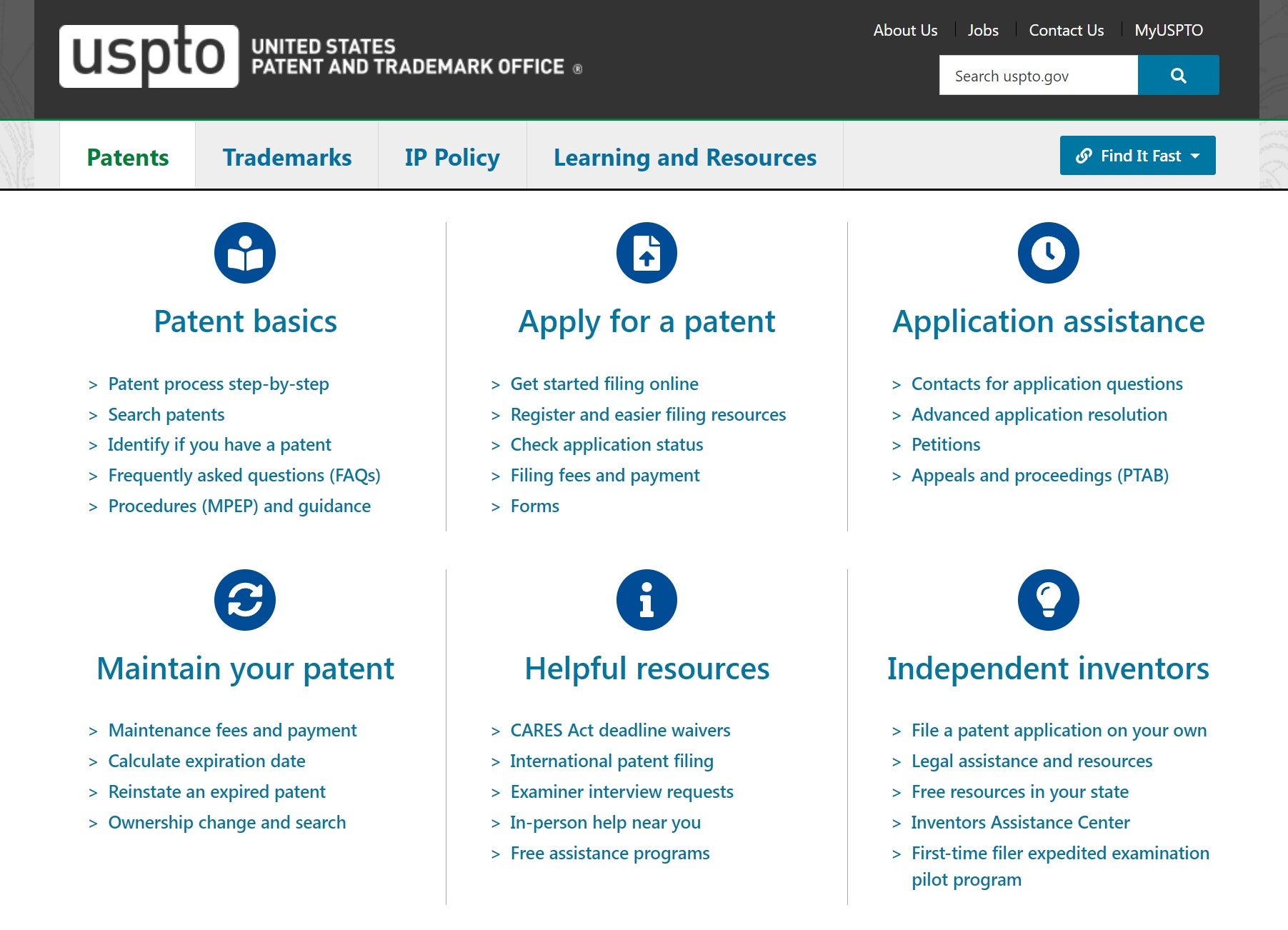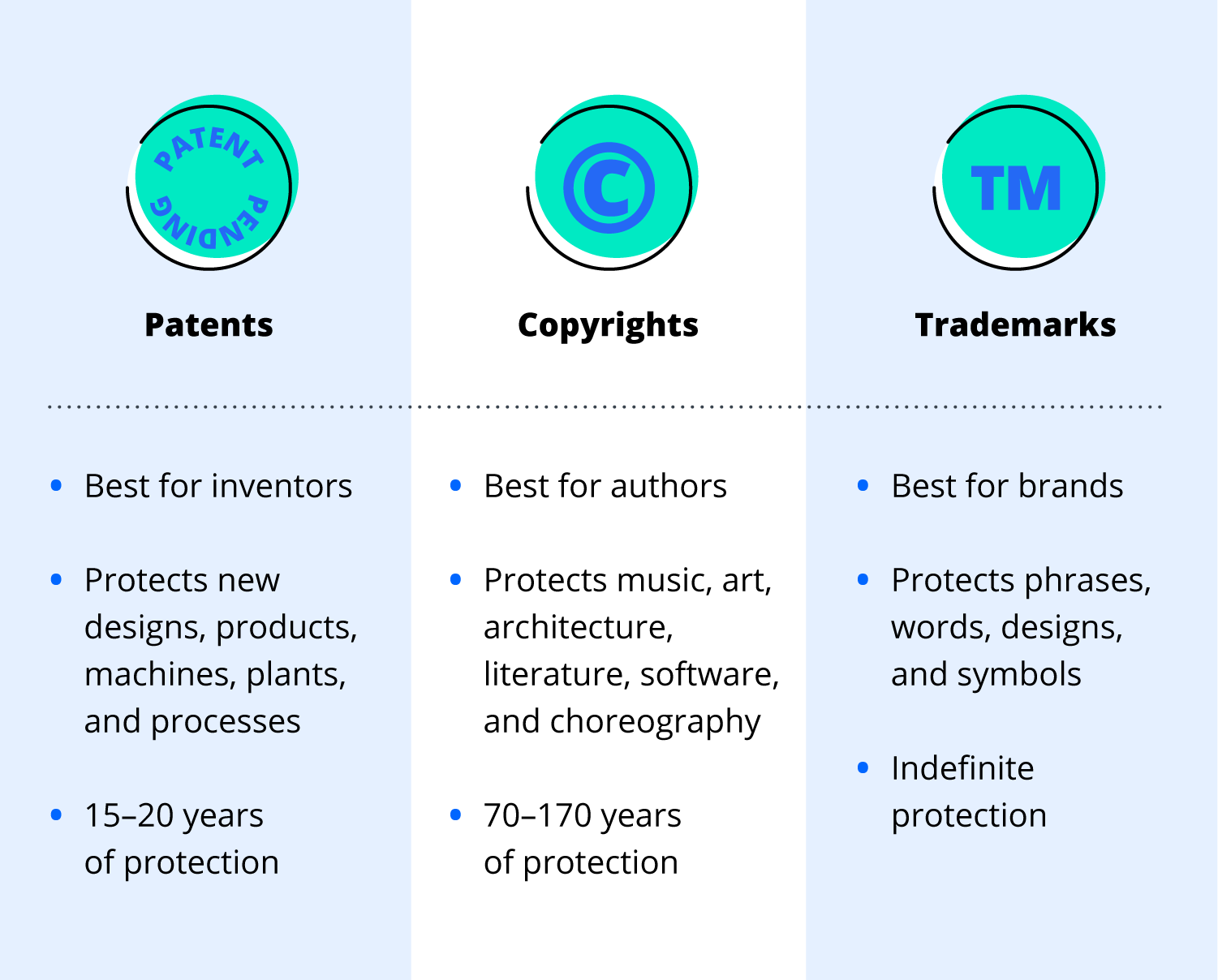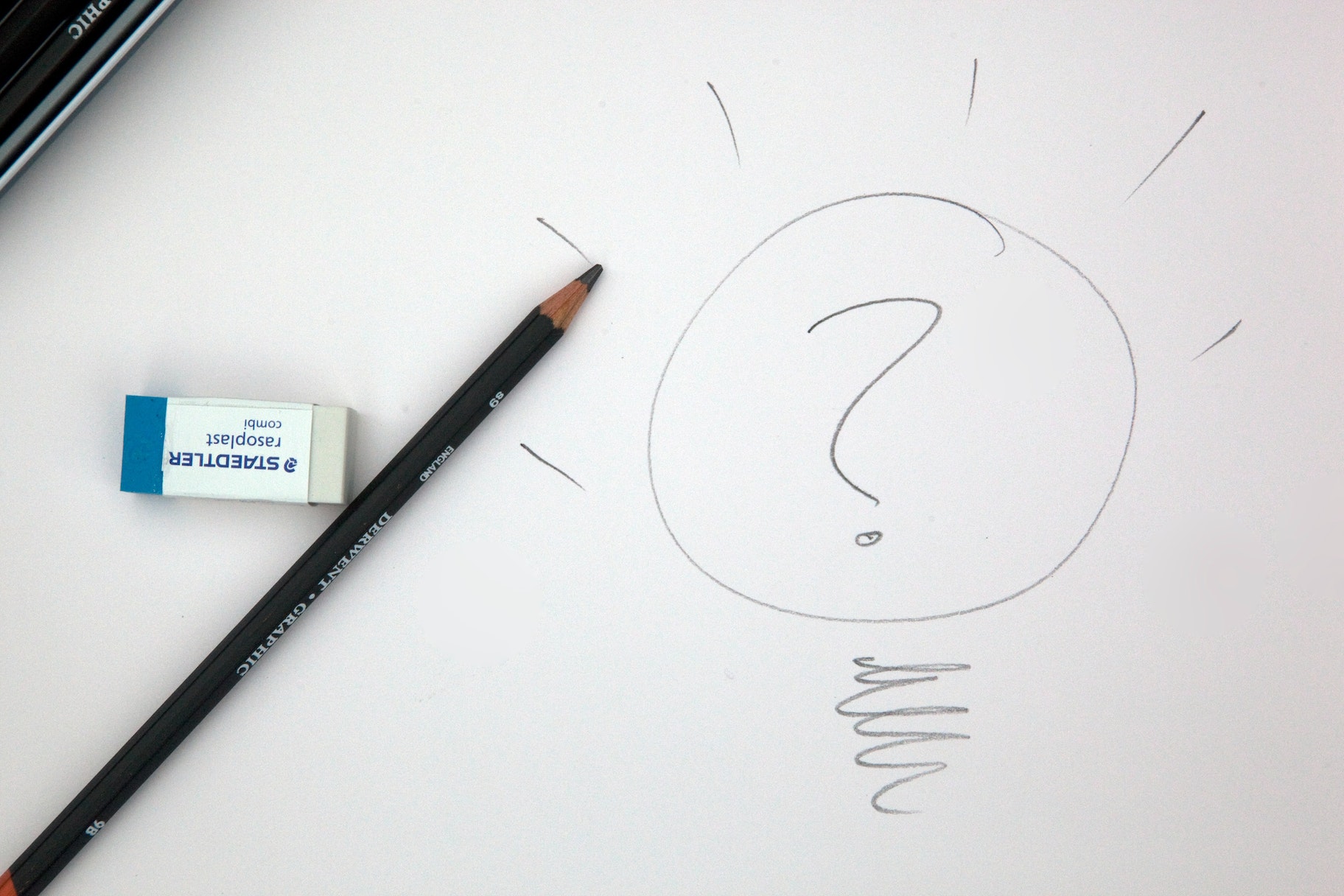Your Entrepreneurial Dream Begins Here!
With Shopify,launching your online store is effortless. Join Shopify today and kickstart your entrepreneurial dream!
Join Shopify todayDo you have an incredible new idea that you think will take off once you launch it? You’re probably thinking of how to protect it from patent infringement. Fortunately, there’s a robust process in place to help make sure your intellectual property (and your profits) are protected.
The problem is that it can be a bit overwhelming to learn how to patent an idea, including the type of patent you should get and how you should go about getting it.
In this article, we’ll cover just that. You’ll learn the basics of patent protection and how you can get started with your own patent process.



What is a patent?
A patent is a document that declares you are the owner of an invention for a specified period of time. As the owner, you’re the one with the sole legal right to produce and sell that invention. Patent protection is so core to the way of life in the US that it’s a right granted in the Constitution.
How do patents work?
First, the inventor submits a patent application with theUnited States Patent and Trademark Office(USPTO). Once it’s approved, the patent holder gets exclusive rights to the invention.

This essentially means you have the ability to fully control the manufacturing, use, and sale of the invention for as long as the patent is valid. This period depends on a few different factors, including the type of patent and the place it’s granted. Generally speaking, many patents last for about 15 to 20 years.
Types of patents
There are three key types of patents:
- Design patent.A design patent goes to the inventor of a new, original, ornamental design for an article of manufacture. It applies to unique designs for items like furniture, clothing, or consumer goods.
- Utility patent.A utility patent is for someone who creates a new useful machine, process, or composition of matter, or any new and useful improvement thereof, as stated by the USPTO.
- Plant patent.A plant patent is for the person who asexually reproduces a new type of plant. Asexual reproduction implies the plant comes into existence in a way other than from a seed—through methods such as grafting or cutting.
Can you patent an idea?
You can’t patent ideas. According to US patent law, only the physical forms of ideas—the machines and products—are patentable, not the foundational ideas.
Patent vs. copyright
In the US, patents and copyright serve as legal safeguards for intellectual property. Though they both protect creative output, they cater to different areas. Copyright secures ownership of creative works like books and art, while patents defend ownership of inventions like product designs or machinery.
How to get a patent in 7 steps
你应该能够处理自己的专利应用cation process if you make sure to do your research. But many inventors find the process a bit complicated and decide to work with a patent attorney. A patent lawyer can be a great idea if you’re looking to get the job done as quickly as possible, with as few obstacles and roadblocks as possible.
Let’s look at the basic steps.
1. Consider if it’s appropriate
Sometimes a patent isn’t the right type of legal document to protect your intellectual property. For example, if your work is creative in nature, a copyright might be a more appropriate choice. If your intellectual property is alogo,brand name, orslogan, a trademark might be more appropriate.
As a general rule, a patent will be the right choice for physical products, inventions, and designs. If you’re having trouble figuring out which type of document you need, it’s a good idea to consult a patent lawyer for advice.

2. Ensure it’s able to be patented
Just because you have an idea doesn’t mean that you’ll be able to patent it. To be eligible for the patent process, your invention should meet a few criteria, including:
- Novelty.The invention needs to be new and unknown and not disclosed to the public. Essentially, this means that nobody has patented it before, described it in a printed publication, used it in public, or tried to sell it.
- Non-obviousness.The invention needs to have an inventive step. This means that it shouldn’t be an obvious solution in the eyes of someone with an average or ordinary level of skill in the field. Furthermore, even if your invention is new, it might not be patentable if a skilled person in the field would find it obvious as a new solution.
- Utility.The invention needs to be practical and specific in its use as an industrial application. Basically, it needs to serve a specific purpose or carry out a specific function.
- Subject matter eligibility.“Subject matter” refers to the types of things that are able to be patented. Your invention needs to be considered eligible subject matter or it won’t be considered. Excluded subject matter includes abstract ideas, natural phenomena, laws of nature, and artistic expressions. Eligibility can also be decided by country: for example, some countries exclude computer programs or types of medical treatment.
3. Do a patent search
Do a thoroughpatent searchon the USPTO website to make sure nobody has patented your idea before. As we mentioned above, it needs to be novel. So if it’s been done, you’ll need to go back to the drawing board.
4. Choose your patent type
Choosing your patent type depends on what you’ve created. If you’ve invented a new look for a smartphone case that’s visually unique, you might opt for a design patent. But if you’ve invented a revolutionary smartphone battery that charges in a minute, a utility patent would be your go-to, as it covers the functional aspects of your invention.
5. Submit your patent application
To start the official patent application process and submit your patent application, visit the USPTO’sEFS-Web. You’ll need to ensure you meet all the guidelines and criteria, as well as submit the appropriate fee for the type of patent you’re looking to get.
There are two main patents you can apply for: a provisional patent application (PPA) or a regular patent application (RPA). A PPA lets you claim “patent pending” status, providing a 12-month period of potential deterrence to competitors without full patent protection. This process is generally less complex, and a patent attorney can assist in navigating it.
6. Work with your patent examiner as needed
If there are any issues with your patent application, the patent office will reach out to you and let you know what’s needed. Keep in mind that there’s a timeline to make any needed updates.
When your patent application is complete, a patent examiner will reach out to you to determine if your invention is eligible for the type of patent you applied for.
7. Pay the necessary fees
If you’re approved by the patent examiner, the USPTO will give you a notice of allowance. Then, before the patent is officially issued, you’ll likely need to pay an issue fee and possibly a publication fee.
Patent checklist
The content of your patent application will hinge on what you’re aiming to patent and the type of patent you’re after. It should include:
- Patent description. This includes the invention’s name, purpose, components or steps, and their interactions. You also need to explain its use, describe any drawings, and note its benefits or other uses.
- Patent drawings. If your patent isn’t for a method, composition, or chemical compound, you need drawings. These should be clear, cover all views, and include proper labels. Your drawings could be line charts, sketches, images, or illustrations.
- Inventor information.Your application should name you and any co-inventors. Co-inventors are those who helped create the invention. Providing these details helps protect against legal issues or future patent disputes.
Protect your creation with a patent
If you have a great new idea, it’s worth it to at least explore the possibility of getting it patented. This can help to protect your business down the road and ensure that you’re the only one profiting from your intellectual property.
因为这可能是一个复杂的问题,我们recommend working with a patent attorney who can walk you through all the ins and outs you’ll need to get the job done well.
How to patent an idea FAQ
Is it hard to patent an idea?
Obtaining a patent can be a complex and time-consuming process. Given the intricate procedures involved in filing, it’s easy to miss key information or stumble into errors. Therefore, you must play close attention and take your time when filing a USPTO patent application.
What is the best way to patent an idea?
The best way to patent an invention is to hire an attorney specializing in the patent filing process. Alternatively, you can refer to USPTO’s guidance documents for self-preparing a patent application.
How much does it cost to patent an idea?
Depending on the type of patent, the USPTO registration could cost up to $900. Examination fees of about $220 are separately charged. If you hire a patent lawyer, the cost of patenting even a simple invention, such as a small consumer item, is between $9,000 and $13,000.
How long does a patent last?
A patent remains valid for 20 years, but maintenance fees are necessary at intervals of 3, 3.5, 7, 7.5, 11, or 11.5 years.






